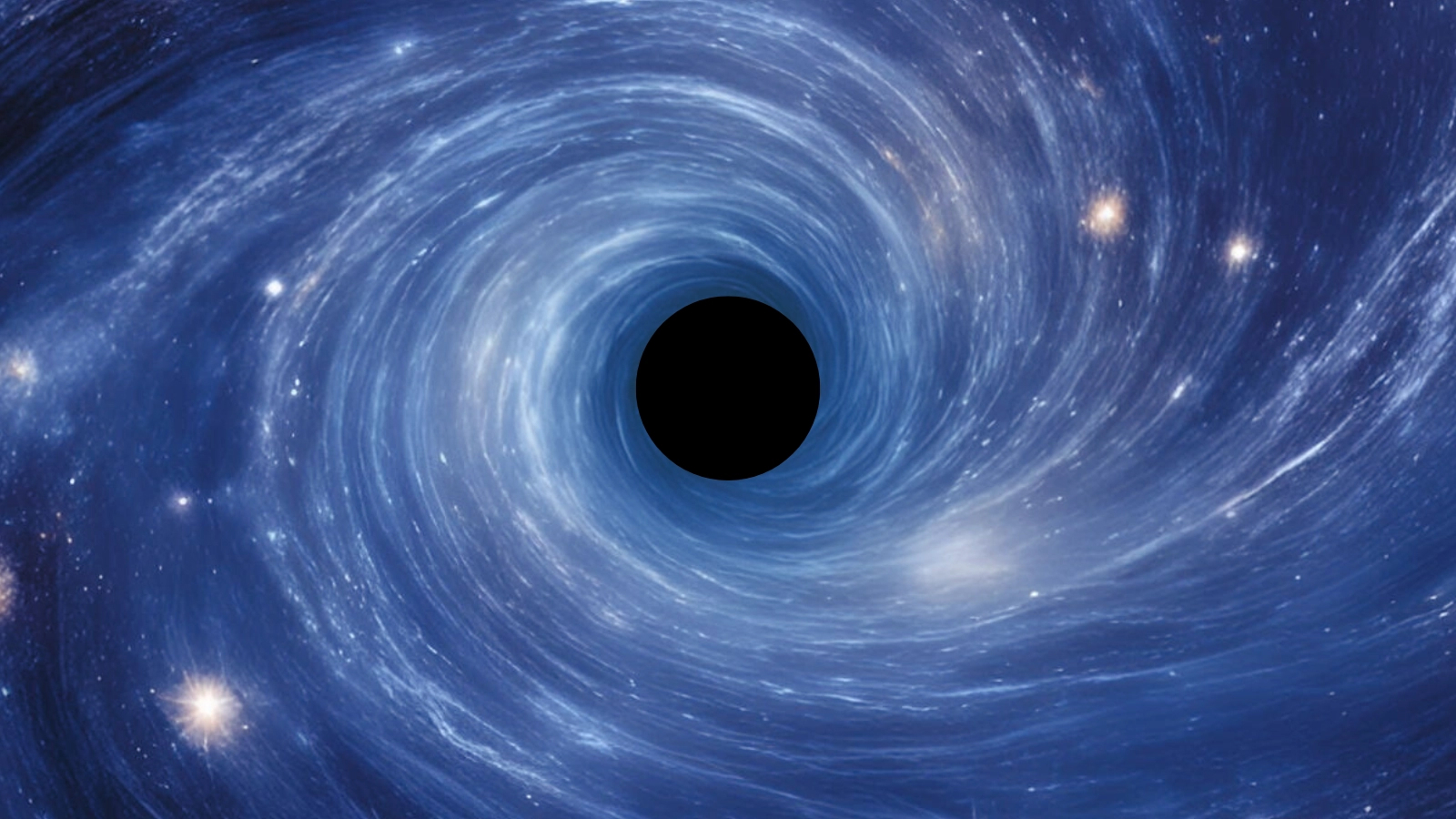When you purchase through nexus on our land site , we may bring in an affiliate commission . Here ’s how it works .
If wormholes subsist , they could blow up the light of distant objects by up to 100,000 times — and that could be the key to finding them , grant to research published Jan. 19 in the journalPhysical Review D.
Wormholesare theoretical funnel - shaped portals through which matter ( or perhaps spacecraft ) could move around large distances . To suppose a wormhole , suppose all of the universe were a shroud of paper . If your starting point were a dot at the top of the bed sheet and your destination were a Elvis on the bottom of the canvass , the wormhole would seem if you folded that sheet of paper so the two dots met . You could traverse the total sheet in an instant , rather than travel the entire distance of the sheet .

An illustration of a theoretical wormhole tunneling through space-time
Wormholes have never been proven to be , but physicist have nevertheless spent decades conjecture what these exotic objects might bet and how they might conduct . In their new newspaper , the investigator built a model to simulate an electrically charged , spherical wormhole and its effects on the universe around it . The researcher wanted to encounter out whether wormholes could be perceptible by their detect effects on their surroundings .
The researchers ' manakin show that wormholes , should they survive , could be massive enough to set off one aspect of Einstein’stheory of Einstein’s theory of relativity : that extremely massive objects flex the fabric of space - fourth dimension to such a point that they make light to crook . This bent abstemious magnifies whatever lounge behind the massive object , as see from our perspective on Earth . This phenomenon is known as " microlensing , " and it allows scientist to use massive objects , like galaxies and black holes , to view extremely distant objects , likestars and galaxies from the early universe .
In the paper , the investigator fence that wormholes , like black hole , would be massive enough to blow up distant objective behind them .

" The magnification via the torture by a wormhole can be very large , which could be tested one day , " lead survey authorLei - Hua Liu , a physicist at Jishou University in Hunan , China , told Live Science in an e-mail .
Liu also note that wormholes would magnify objective otherwise than sinister holes do , mean scientist could distinguish the two . For representative , microlensing via a black hole is recognise to produce four mirror images of the object behind it . Microlensing via a wormhole , on the other script , would produce three images : two vague ones , and one very shining one , the authors ' simulations showed .
— 12 sensational quantum physics experimentation

— The 18 bragging unresolved mysteries in natural philosophy
— physicist give unearthly new form of matter an extra dimension
However , because other objects — like galaxies , black holes and principal — also raise a microlensing event , find a wormhole with no clear-cut clues about where to part count would be a difficult undertaking , Andreas Karch , a physicist at the University of Texas at Austin who was not involved in the survey , told Live Science in an e-mail .

taste to tease out the microlensing stimulate by a wormhole versus other large objects would be like " trying to make out the diffuse voice of a single someone in the midsection of a careen concert , " Karch say . He also noted that while the paper authors offered an interesting theoretical manner to identify wormholes , " they do n’t even talk about how to do this in practice yet — that ’s future body of work . "
Although wormhole are still solidly theoretical , the fact that the researcher ' model could one mean solar day be tested is " the aspiration for most physicist , " Liu state .














